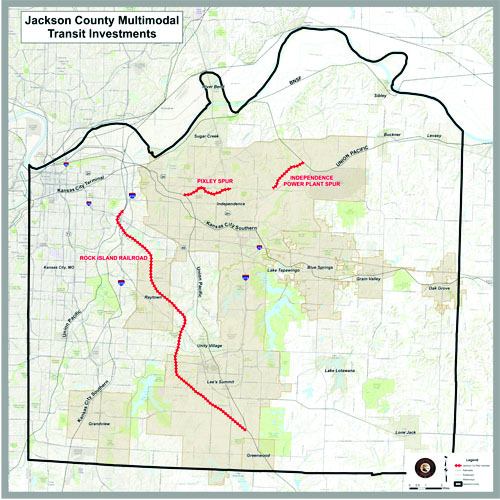
Joe Jarosz
Northeast News
Feb. 25, 2014
KANSAS CITY, Missouri – Expanded public transportation options could be in Jackson County’s future.
On Monday, Mike Sanders, Jackson County executive, announced the county has entered into a Memorandum of Understanding with Union Pacific Railroad. The memorandum gives Jackson County exclusive rights to purchase key transit corridors, which have the potential to be used for expanded public transit options in the future.
In a press release, Sanders said this agreement helps make commuter rail transportation in Jackson county a real possibility. The agreement also allows Jackson County to assess transit options along the agreed upon corridors so “we can make the best decision for the future of the region.”
The memorandum gives the county the right to acquire 15.5 miles of the Rock Island corridor, which runs past the Truman Sports Complex through Raytown and Lee’s Summit. The agreement also includes 3.5 miles of right of way near downtown Independence, more commonly known as Pixley Spur. The Rock Island Corridor provides the primary connection between Kansas City and the Missouri Katy Trail State Park.
Jackson County will also acquire access to Union Pacific’s “Independence Power and Light” spur, which runs 1.9 miles between the Lake City Ammunition Plant and 23rd and Truman Road in Independence.
The county has not made a financial commitment to any of the corridors in the agreement. County official plans to work with its local congressional representatives to access any possible grant opportunities. The total cost for the purchase would be approximately $59.9 million. Rep. Emanuel Cleaver II, D-Missouri, said in the release that the ability to move freely and easily throughout the metro area will “offer citizens more opportunity and will increase the economic competitiveness of our region.” Cleaver added he plans to work with the Department of Transportation to identify any available funds to acquire the corridors.
County officials will also work with Union Pacific Railroad, the Mid-American Regional Council and cities along the corridors to assess all transit options, including commuter rail and expanded county trails.

















